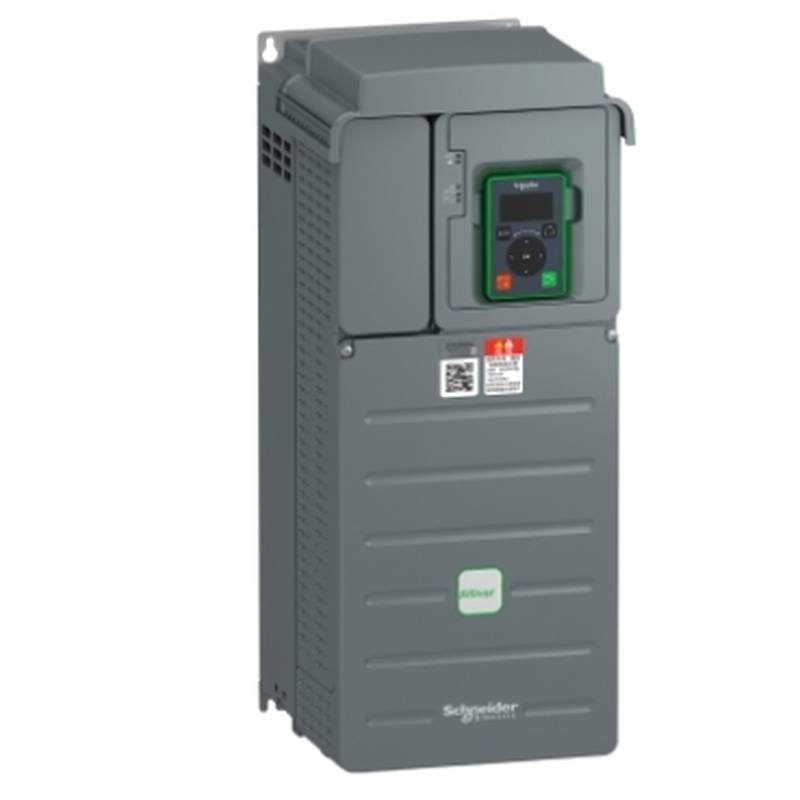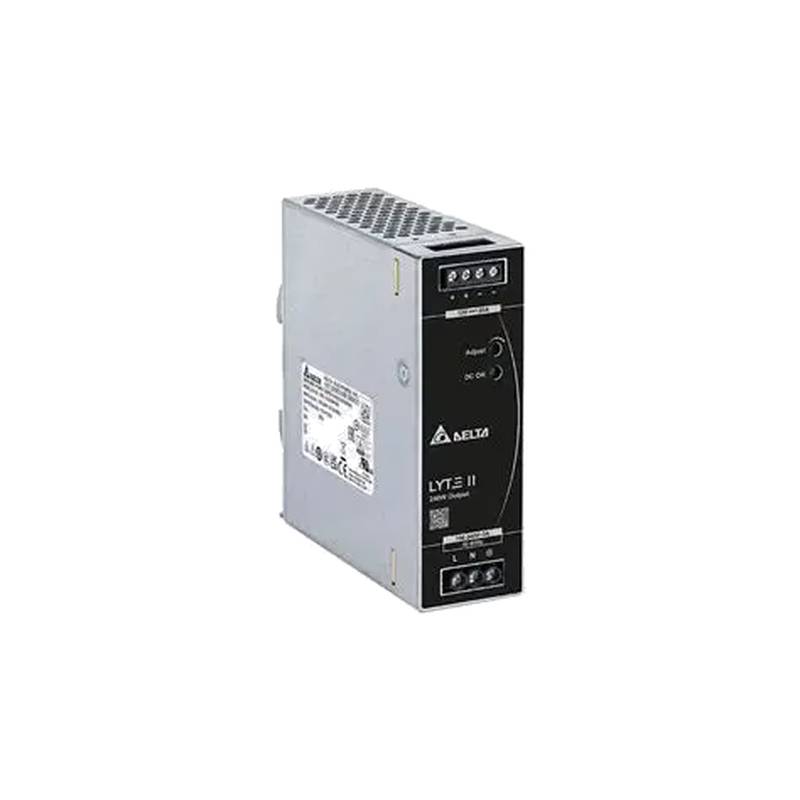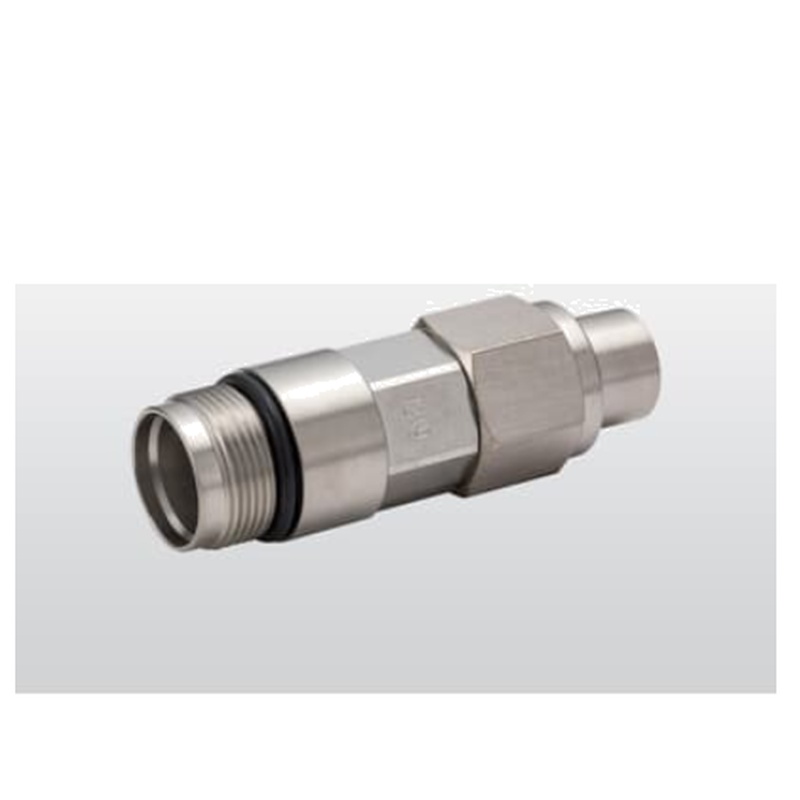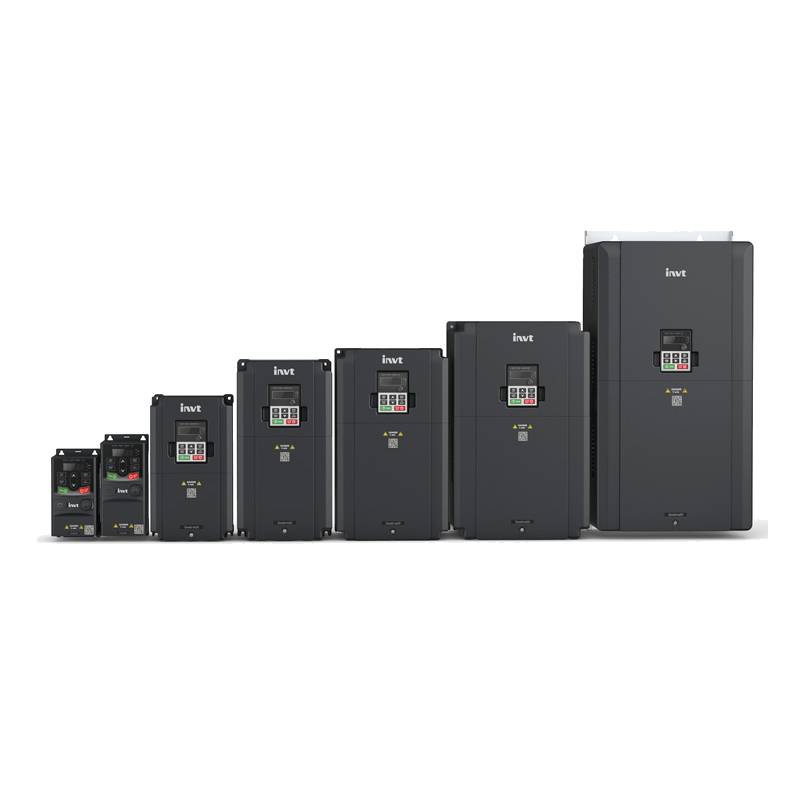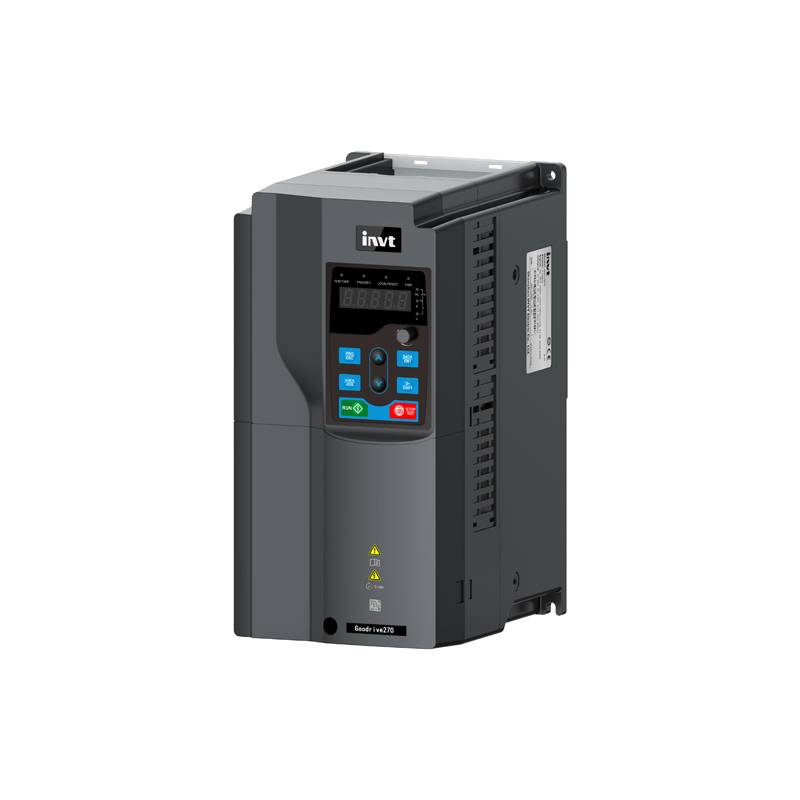
The SIMPHOENIX DL100-4T0022 is a robust 2.2kW general-purpose Variable Frequency Drive (VFD) engineered for precision motor control across a wide spectrum of industrial applications. This VFD excels by offering advanced sensorless vector control, a compact design for space-constrained installations, and comprehensive protection features, ensuring reliable operation and extended equipment lifespan. Its integrated braking unit and support for multiple communication protocols streamline system integration. The DL100-4T0022 boasts a 2.2kW power rating, an input voltage range of 380-460V AC (3-phase), and an output frequency of 0-400Hz, making it a versatile solution for demanding industrial environments.
SIMPHOENIX DL100-4T0022: Product Specifications
| Parameter | Specification |
| :------------------ | :-------------------------------------------------- |
| Model | DL100-4T0022 |
| Power Rating | 2.2 kW (3 HP) |
| Input Voltage | 380-460V AC (3-Phase) |
| Output Voltage | 380-460V AC (3-Phase) |
| Output Frequency | 0-400 Hz |
| Control Method | Sensorless Vector Control, V/f Control |
| Overload Capacity | 150% for 60 seconds, 120% for 120 seconds |
| Protection Features | Overcurrent, Overvoltage, Undervoltage, Overtemperature, Phase Loss, etc. |
| Braking Unit | Integrated |
| Communication | Modbus RTU (standard), optional fieldbus modules |
| Dimensions (H x W x D)| (Refer to manufacturer's datasheet for precise dimensions) |
| Ambient Temperature | -10°C to +40°C (derating may apply) |
Core Features & Market Positioning
The SIMPHOENIX DL100-4T0022 distinguishes itself in the competitive industrial VFD market through its exceptional sensorless vector control algorithm, which delivers precise torque and speed regulation comparable to closed-loop systems, even without motor feedback. This advanced control capability minimizes reliance on additional encoder hardware, reducing system complexity and cost. Its robust design incorporates advanced thermal management and comprehensive protection mechanisms, including overload, overvoltage, undervoltage, and phase loss detection, ensuring operational stability and safeguarding connected equipment. The integrated braking unit provides effective deceleration control, crucial for applications requiring rapid stopping or precise load holding. Furthermore, the DL100-4T0022 supports the Modbus RTU protocol natively, with options for various fieldbus communication modules, facilitating seamless integration into existing SCADA and DCS systems. This combination of high performance, reliability, and integration flexibility positions the DL100-4T0022 as a premium yet cost-effective solution for demanding automation tasks.
Key Application Scenarios
The versatility of the SIMPHOENIX DL100-4T0022 makes it an ideal choice for a broad range of industrial applications. In material handling systems, such as conveyors and elevators, its precise speed control and torque responsiveness ensure smooth product movement and efficient operation. For pump and fan applications, the VFD optimizes energy consumption by matching motor speed to system demand, leading to significant energy savings, particularly in HVAC and water management systems. In machine tool applications, the DL100-4T0022 provides the dynamic performance required for spindle drives and axis control, offering accurate speed and positioning capabilities. Its robust construction and comprehensive protection features also make it suitable for demanding environments found in manufacturing, processing, and packaging industries where continuous and reliable operation is paramount.
Practical System Integration Guidance
Integrating the SIMPHOENIX DL100-4T0022 into an industrial system is straightforward due to its user-friendly design and flexible connectivity options. For wiring, ensure a clean and stable power supply is connected to the input terminals (L1, L2, L3) and the motor is connected to the output terminals (T1, T2, T3). Grounding of both the VFD and the motor is critical for safety and electromagnetic compatibility. For communication, the standard Modbus RTU interface uses terminals RT+ and RT- for data transmission. Referencing the product manual for specific parameter settings, such as motor data auto-tuning and control mode selection (sensorless vector or V/f), is highly recommended to achieve optimal performance tailored to the application. Initial commissioning often involves running the motor auto-tuning function to calibrate the VFD to the motor's electrical characteristics.
Operation and Risk Mitigation
Safe and efficient operation of the SIMPHOENIX DL100-4T0022 relies on adherence to recommended practices and understanding its protective functions. Always ensure the VFD is properly grounded and that all electrical connections are secure before applying power. During operation, monitor motor temperature and VFD status through the integrated display or communication interface. Common fault codes, such as "OC" (Overcurrent) or "OV" (Overvoltage), indicate specific protective trip events that require investigation into motor load or power supply conditions. The VFD's built-in protection against phase loss on both input and output sides is crucial for preventing motor damage. Always consult the user manual for a comprehensive list of fault codes and troubleshooting procedures before attempting any corrective actions.
Scalability & Long-Term Value
The SIMPHOENIX DL100-4T0022 offers significant long-term value through its inherent scalability and compatibility with modern industrial automation trends. Its ability to integrate seamlessly with Programmable Logic Controllers (PLCs) and Supervisory Control and Data Acquisition (SCADA) systems via standard communication protocols like Modbus RTU ensures it can be a central component in larger, distributed control architectures. For future expansion or system upgrades, the DL100 series is designed with modularity in mind, allowing for the addition of optional communication cards to support various fieldbus networks (e.g., Profibus, DeviceNet, Ethernet/IP) as industrial communication standards evolve. This forward-thinking design minimizes the need for costly replacements when system requirements change, ensuring the VFD remains a relevant and valuable asset throughout its operational life, aligning with the principles of Industry 4.0 by providing data accessibility for performance monitoring and predictive maintenance.
Frequently Asked Questions
What is the primary function of a VFD like the SIMPHOENIX DL100-4T0022?
A VFD, such as the SIMPHOENIX DL100-4T0022, fundamentally controls the speed and torque of an AC motor by adjusting the frequency and voltage of the electrical power supplied to it. This precise control allows for optimized motor performance, significant energy savings, and reduced mechanical stress on machinery. It enables the motor to run at variable speeds rather than fixed speeds dictated by the power line frequency.
The ability to precisely match motor speed to application demand is a key advantage, leading to efficiency gains in pumps, fans, conveyors, and many other industrial processes. This not only reduces energy consumption but also contributes to quieter operation and longer equipment lifespan by minimizing wear and tear associated with frequent starting, stopping, and running at full speed unnecessarily.
Furthermore, VFDs offer advanced features like soft starting and stopping, which gradually ramp up or down motor speed, preventing sudden jolts to the mechanical system. They also provide comprehensive motor protection features, safeguarding against overloads, overvoltage, undervoltage, and phase loss.
How does the sensorless vector control of the DL100-4T0022 benefit my application?
Sensorless vector control in the SIMPHOENIX DL100-4T0022 provides high-performance motor control without the need for motor feedback devices like encoders. This technology allows the VFD to accurately estimate motor speed and torque, enabling precise speed regulation and excellent dynamic response, similar to systems using encoders.
By eliminating the need for encoders, the system's complexity and installation costs are reduced. This also means fewer potential points of failure, as encoders and their associated wiring can be susceptible to environmental factors and mechanical damage in industrial settings.
This advanced control method is particularly beneficial in applications requiring stable speed under varying loads, such as conveyors, machine tools, and process machinery. It ensures consistent performance, leading to improved product quality and process efficiency.
What types of motors can be controlled by the SIMPHOENIX DL100-4T0022?
The SIMPHOENIX DL100-4T0022 is designed to control standard three-phase induction motors. Its versatile control algorithms, including sensorless vector control and V/f control, make it compatible with a wide range of motor types commonly used in industrial applications.
The VFD requires basic motor parameters, such as rated power, voltage, current, and frequency, to be programmed during setup. This allows the VFD to optimize its performance characteristics, such as torque boost and current limits, to match the specific motor connected.
For optimal performance and protection, it is crucial to use motors that are rated for variable frequency drive operation. Always refer to the motor manufacturer's specifications and the SIMPHOENIX DL100-4T0022 user manual to ensure compatibility and proper configuration.
Can the DL100-4T0022 be integrated into an existing automation system?
Yes, the SIMPHOENIX DL100-4T0022 is engineered for seamless integration into existing automation systems. It supports standard industrial communication protocols, most notably Modbus RTU, via its built-in RS485 interface.
This allows the VFD to communicate with PLCs, HMIs, and SCADA systems for remote control, monitoring, and parameterization. Additional communication protocols can often be added through optional expansion cards, further enhancing its interoperability with various fieldbus networks.
Proper configuration of the communication parameters on both the VFD and the master control device is essential for successful integration. This ensures reliable data exchange for speed commands, status feedback, and alarm management.
What are the key protection features of the SIMPHOENIX DL100-4T0022?
The SIMPHOENIX DL100-4T0022 incorporates a comprehensive suite of protection features to safeguard both the VFD and the connected motor from damage. These include overcurrent, overvoltage, undervoltage, and motor overload protection.
It also provides protection against rapid temperature rise (overheating) and phase loss on both the input power supply and the motor output. These features are critical for preventing equipment failure, minimizing downtime, and ensuring operator safety in industrial environments.
When a fault occurs, the VFD will typically trip and display a specific error code, indicating the nature of the protection event. Understanding these codes, as detailed in the product manual, is essential for effective troubleshooting and quick resolution of issues.
How do I perform motor auto-tuning with the DL100-4T0022?
Motor auto-tuning is a crucial setup procedure for the SIMPHOENIX DL100-4T0022, especially when using sensorless vector control. This function calibrates the VFD to the specific electrical characteristics of the connected motor for optimal performance.
To initiate auto-tuning, typically the motor is disconnected from the load (or the load is released) and the auto-tuning function is accessed through the VFD's parameter menu. The VFD then performs a series of tests while the motor is running at low speed to determine parameters like motor resistance, inductance, and magnetic flux.
Once the auto-tuning process is complete, the VFD stores the determined motor parameters. It is highly recommended to perform this procedure whenever a new motor is connected or if the motor has been changed to ensure the VFD operates efficiently and accurately.
What is the operating temperature range for the SIMPHOENIX DL100-4T0022?
The SIMPHOENIX DL100-4T0022 is designed to operate within a specified ambient temperature range, typically from -10°C to +40°C. Operating the VFD within this range ensures reliable performance and longevity.
If the VFD is operated in ambient temperatures above 40°C, derating of the output current capacity will be necessary to prevent overheating. The specific derating factors are usually detailed in the product's technical documentation or user manual.
Adequate ventilation is also critical. Ensure that the VFD is installed in a location with sufficient airflow and that the cooling fins are not obstructed to maintain optimal operating temperatures.
Can the integrated braking unit of the DL100-4T0022 be used for all applications?
The integrated braking unit in the SIMPHOENIX DL100-4T0022 is designed to dissipate braking energy during deceleration or overhauling conditions. This unit is highly effective for many common applications requiring controlled stopping or load holding.
For applications with very high inertia loads or frequent, rapid braking cycles, external braking resistors might be necessary to supplement the integrated unit. These external resistors provide additional capacity to absorb braking energy and prevent overvoltage faults.
The specific requirements for braking depend on the application's dynamics. It is essential to analyze the load characteristics and perform calculations to determine if the integrated braking unit is sufficient or if external components are needed for safe and reliable operation.
What are the typical power and output specifications for the DL100-4T0022?
The SIMPHOENIX DL100-4T0022 is rated at 2.2 kW (kilowatts), which is equivalent to approximately 3 horsepower. This power rating makes it suitable for a wide array of medium-duty industrial applications.
The VFD accepts a three-phase input voltage typically in the range of 380 to 460 Volts AC. Correspondingly, it outputs a three-phase voltage to the motor that can be controlled across a frequency range, commonly from 0 Hz up to 400 Hz, allowing for precise speed control.
These specifications ensure the DL100-4T0022 can drive standard industrial motors effectively and provide the necessary flexibility for various speed requirements, from low-speed operation to high-speed applications.
How do I troubleshoot common issues with the SIMPHOENIX DL100-4T0022?
Troubleshooting common issues with the SIMPHOENIX DL100-4T0022 typically begins by consulting the VFD's display for any active fault codes. These codes provide specific information about the nature of the problem, such as overcurrent (OC), overvoltage (OV), or motor overload (OL).
Once a fault code is identified, refer to the product's user manual for a detailed explanation of the code and recommended troubleshooting steps. Common issues often relate to incorrect parameter settings, motor connection problems, power supply disturbances, or excessive motor load.
Always ensure the VFD is properly installed, grounded, and that all wiring connections are secure before applying power. If the issue persists after basic checks and referencing the manual, consider contacting technical support for further assistance.

















